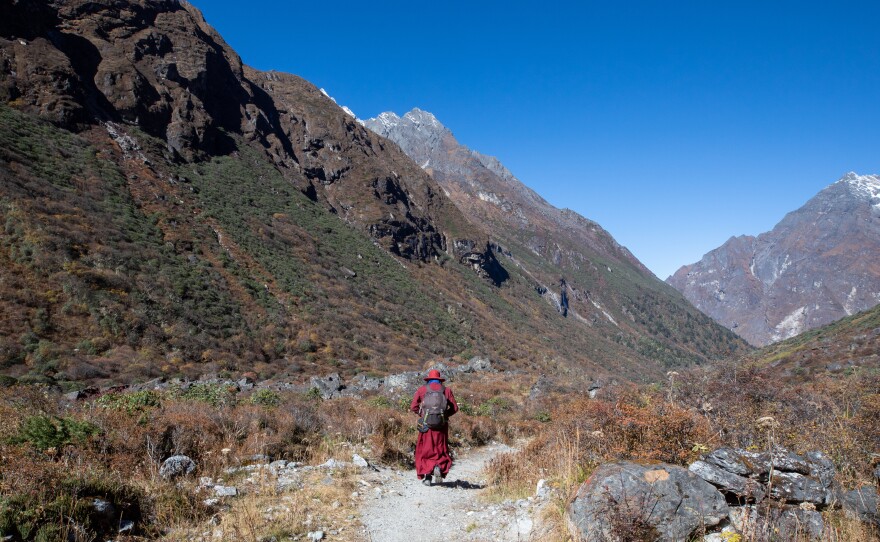Presidents and prime ministers, secretaries and kings are in Egypt for the United Nations annual climate change negotiations. And when world leaders talk about climate change, they evoke one group more than any other: children.
The plight of future generations, and the need to protect today's children from a future made unlivable by global warming, is at the moral heart of international climate negotiations. The United Nations estimates about a billion children are at extremely high risk because of climate change, whether that's because of rising seas, heavy rain, drought or deadly heat waves.
But what is life like for children living on the front lines of climate change? How is information about a changing planet passed down to the inheritors of a hotter Earth? And in places where the Internet is not ubiquitous, how do young people understand the changes that they are witnessing?
We visited one school in Nepal's Rolwaling Valley and talked to students and teachers there about their experiences, frustrations and hopes for the future.
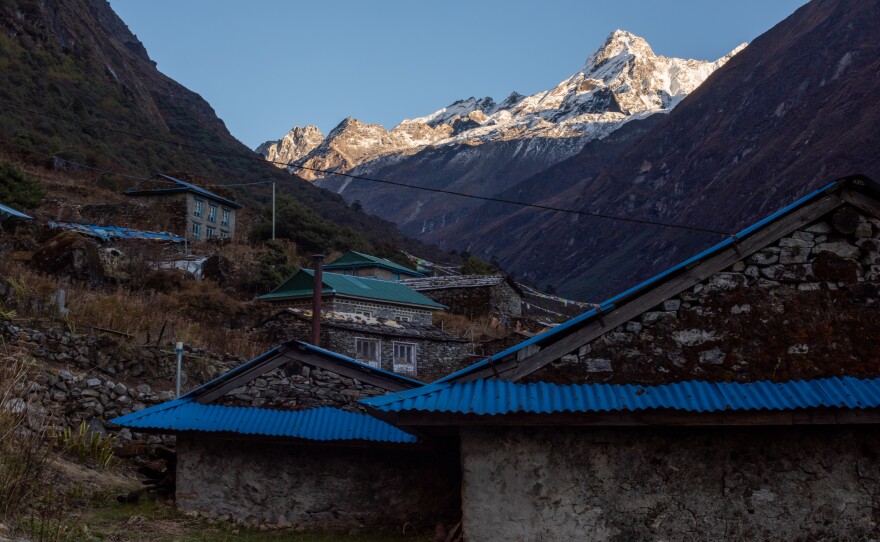
A school surrounded by beauty and danger
The Rolwaling Sangag Choling Monastery School is nestled in a steep valley. At the bottom is the Rolwaling River. Behind the school, the rocky cliffs of the Himalayan mountains climb dramatically to peaks of more than 23,000 feet. It is about a two day walk from the school to the nearest road. The area only had sporadic solar electricity until earlier this year.
The school is home to nearly two dozen boys who live and study there most of the year, except for a brief period in the winter when they return to their hometowns nearby.
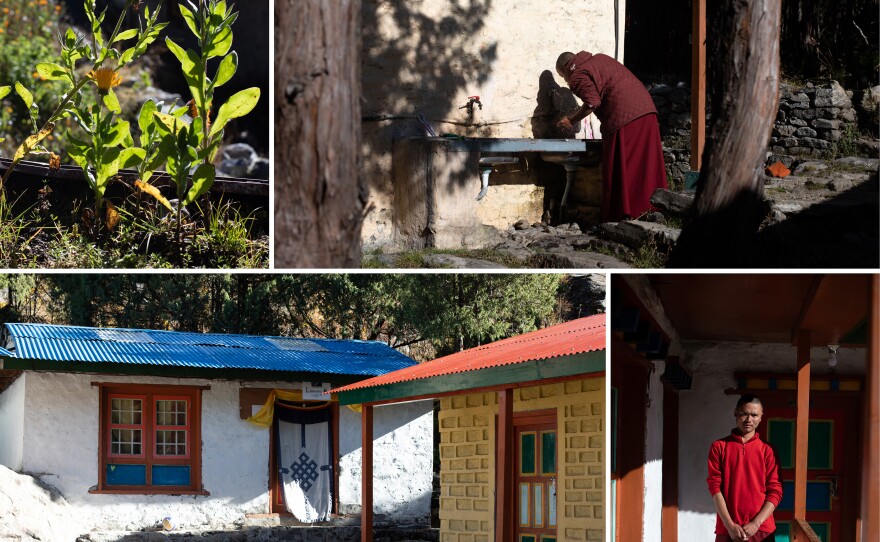
It is a life that is intensely, unavoidably, connected to nature. And the students, especially the older ones, have noticed nature changing.
"We can see many mountains here," says Mingma Thamang, an 18-year-old student at the school who has hiked up to a nearby glacial lake multiple times in recent years. He says he has heard rumors that the lake, which is upstream from his school, could cause a big flood in the future.
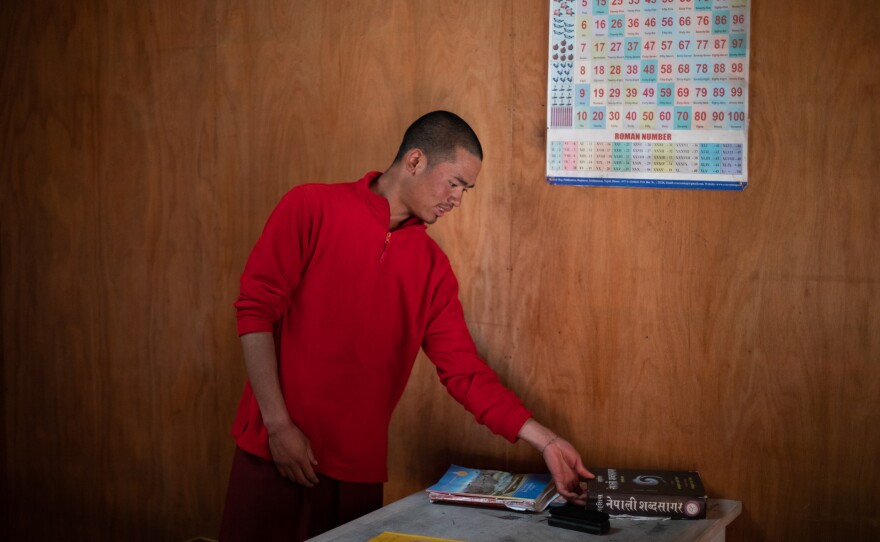
Indeed, the lake is at critical risk for flooding, according to scientists. And the school is located very close to the river, and would likely be damaged or destroyed in such a disaster.
Bolendra Acharya has taught at the school for 12 years and says there are other obvious changes as well. Snow that used to cover the nearby mountains in thick blankets is now spotty and thin. Now, bare rock shows even on the highest peaks. And rain that used to arrive on a reliable schedule in the summer is now more variable.
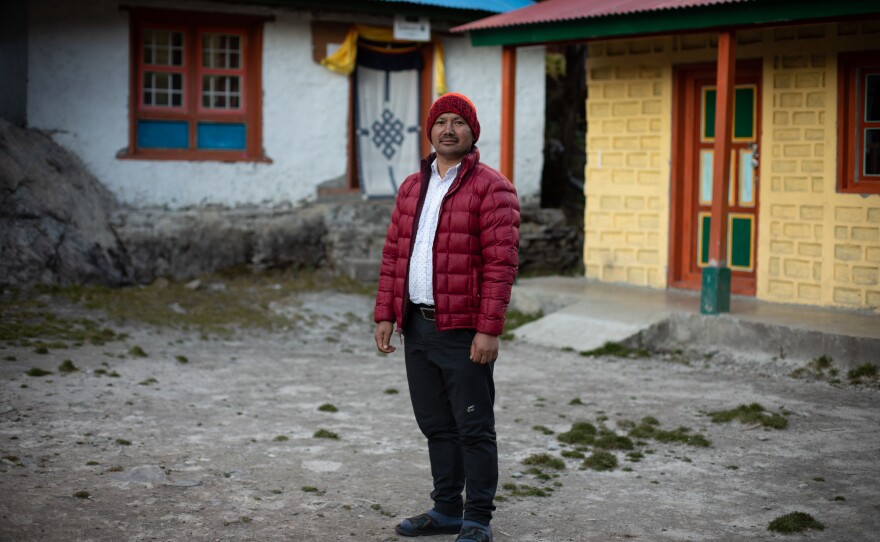
The unreliable rain is a problem because most people who live in the area farm, raise livestock or work in the mountain trekking industry. When the rain comes late, or all at once, it hurts crops and makes it difficult to safely cross the river. Domestic yaks and other livestock are unable to access grazing areas.
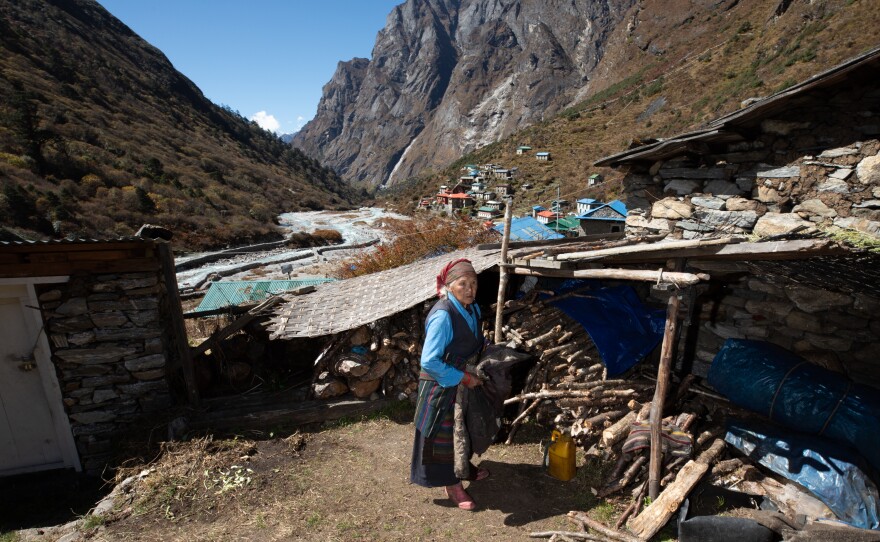
And as the area gets more popular with local Nepalese tourists, it also becomes more dangerous for hikers who are using narrow riverside paths and suspension bridges because of high water from heavy rain and glacial melt.
Acharya grew up nearby and says, when he was young, life in the valley was very different. "Our life was safe. We would just cross the river," he says. "But now it seems like, at any time, it could just sweep us away. There is a kind of fear among us. Anything could happen."
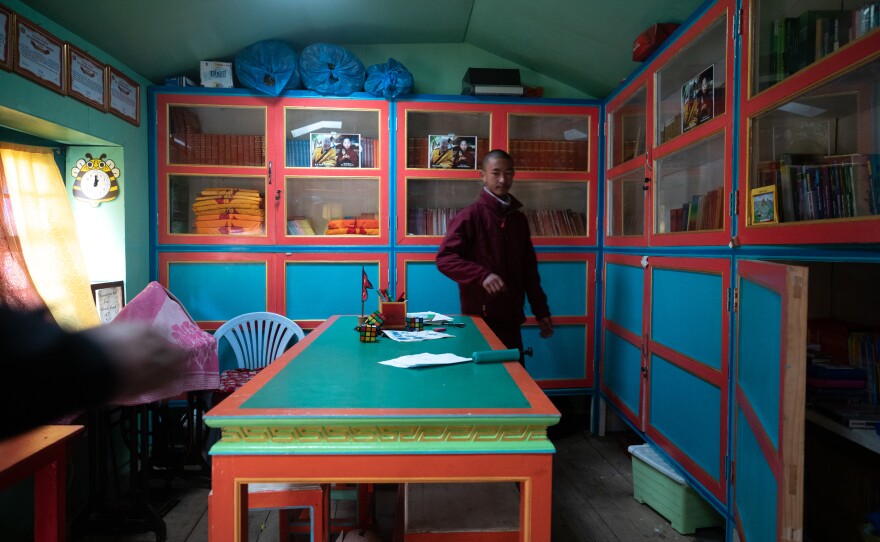
A desire for to know more about a changing planet
Acharya makes it a point to talk to his students about the environment. "From my point of view, I'm very interested to introduce the students to climate change," he says, "because they live in an area where there is a lot to learn."
Right now, there's no formal climate change curriculum, although they do study general science. The primary goal of the school is to educate students to become lamas – Buddhist religious leaders. Students study math, history, science and other academic subjects for the first five years and those that continue on for the remaining three years focus on religious and language training.
"We learned about the weather, about different types of animals," says Thamang.
Lhakpa Sonam Sherpa, who recently graduated from the school, says he learned about plants and animals of the region, and about the larger geography of Nepal.
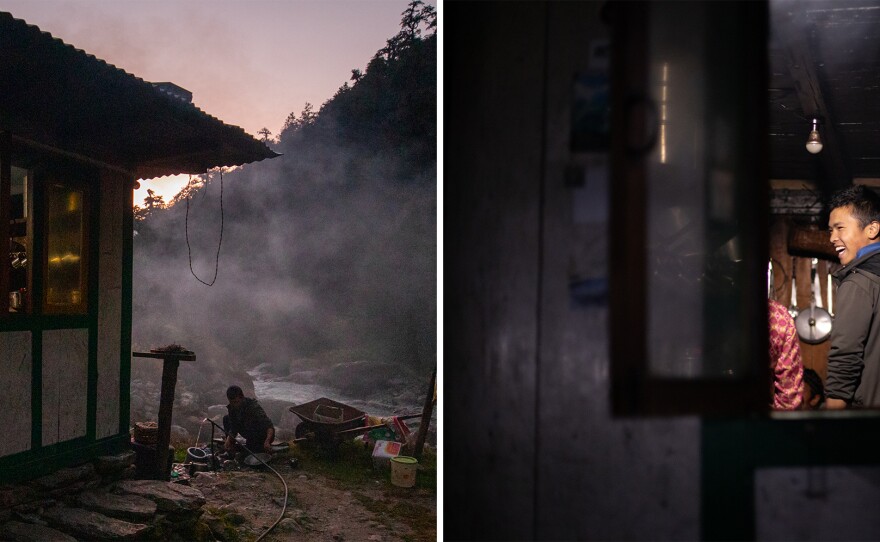
But students at the school say they know only a little about where their home fits in the larger picture of global climate change, and would like to know more.
"We want to learn more about the environment," says Thamang. "Because then maybe we can do something to make it cleaner and safer."
The teacher, Acharya, says even if most of his students will go on to work in religious roles that don't directly interact with environmental policy, it's still important to bring climate change into the classroom. These future religious leaders will be the ones that local people turn to as they try to make sense of their changing environment. And decisions to protect local forests or adapt to flood risk will likely include consultations with religious authorities in this heavily Buddhist area.
To that end, Acharya says he wants his students to understand that the changes they are witnessing are being caused by people in other parts of the world.
"We are not the people polluting the environment. It's factories in cities, especially out in the bigger world. It's not people like us, living in rural areas, that are contributing to the damage of Earth," he says. "Local students need knowledge about climate change, to be empowered to make their own decisions, and to protect themselves."
Copyright 2024 NPR. To see more, visit https://www.npr.org. 9(MDAzMjM2NDYzMDEyMzc1Njk5NjAxNzY3OQ001))
